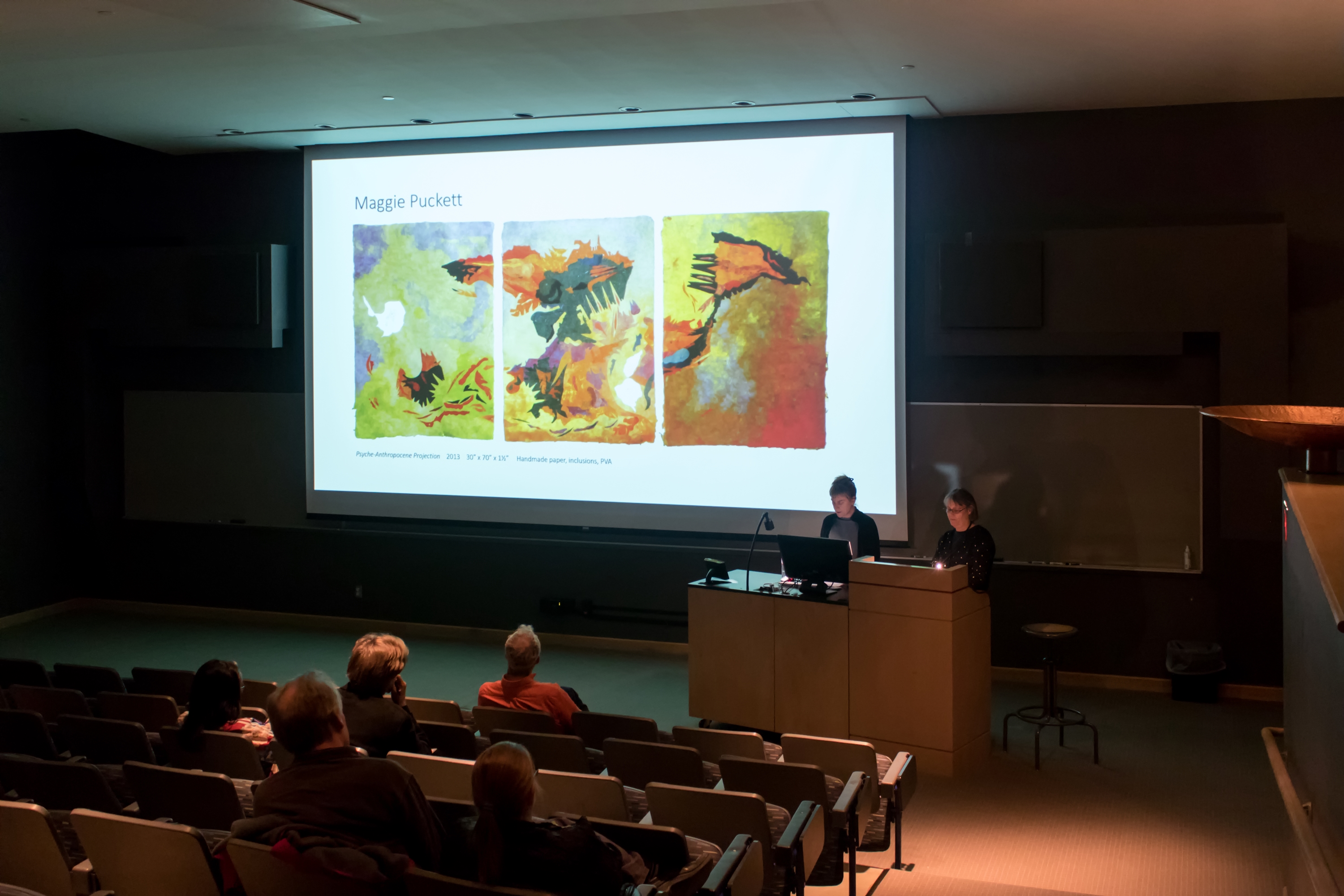Melissa Hilliard Potter and Reni Gower present on work by artist Maggie Puckett.
Photo by Nidi Garcia.
On Feb. 1, co-curators Melissa Hilliard Potter and Reni Gower treated Lawrentians to “Pulped Under Pressure: The Art of Handmade Paper.” The traveling exhibit highlights paper art from seven different artists, including Potter and Gower. The pair met while Potter was a student of Gower’s at Virginia Commonwealth University and eventually began working on projects together.
Throughout the presentation, Potter and Gower each gave historical background on paper and the art of papermaking. Beginning with the invention of paper in China, to the spread from East to West, to the invention of the Fourdrinier papermaking machine, the audience received a brief but in-depth history of paper. The curators then jumped into the twentieth century and examined the rejuvenation in handmade paper crafts, specifically referring to the Roycroft Shops. These shops focused on the craft artists and their work in late nineteenth and early twentieth centuries.
After lecturing the audience on the history of handmade paper, Potter and Gower introduced the artists featured in the exhibit and their respective systems of reasoning behind using this medium. The artists included were Jillian Bruschera, Julia Goodman, Reni Gower, Trisha Oralie Martin, Melissa Hilliard Potter, Marilyn Propp and Maggie Puckett. As Gower and Potter gave the audience biographical information about each of the women, it became obvious that the main concern connecting each of these artists was the environment. From putting discarded objects into paper containers, to showing the clash between the industrial and natural worlds, the projects were clear in projecting their over-arching idea: people need to be more active in preserving nature. Apart from environmentalism, the artists also conveyed their message of inclusivity; whether it is in reference to the LGBTQ+ community or cross-cultural identities, each piece encourages understanding.
Interspersed within the artists’ biographies were the paper methods they used while creating these pieces. Jillian Bruschera has a “work with what you got” mentality and uses discarded materials; she puts paper into sidewalk cracks so people will look at it in a new way. Taking an interesting stance on social divisions, Julia Goodman works with rag paper and imprints opera fonts onto the pieces, merging the low and high classes. Marilyn Propp focuses more on marine life, using machine parts and making small constructions from found objects. Her pieces are unframed, giving the prints the illusion that they are floating off the walls. In each of these works, as well as others, the artists showcased their own personal beliefs.
In a time when environmental issues seem to be on the back burner, Potter’s and Gower’s exhibit breathes fresh air into the ever-present issue of climate change.

